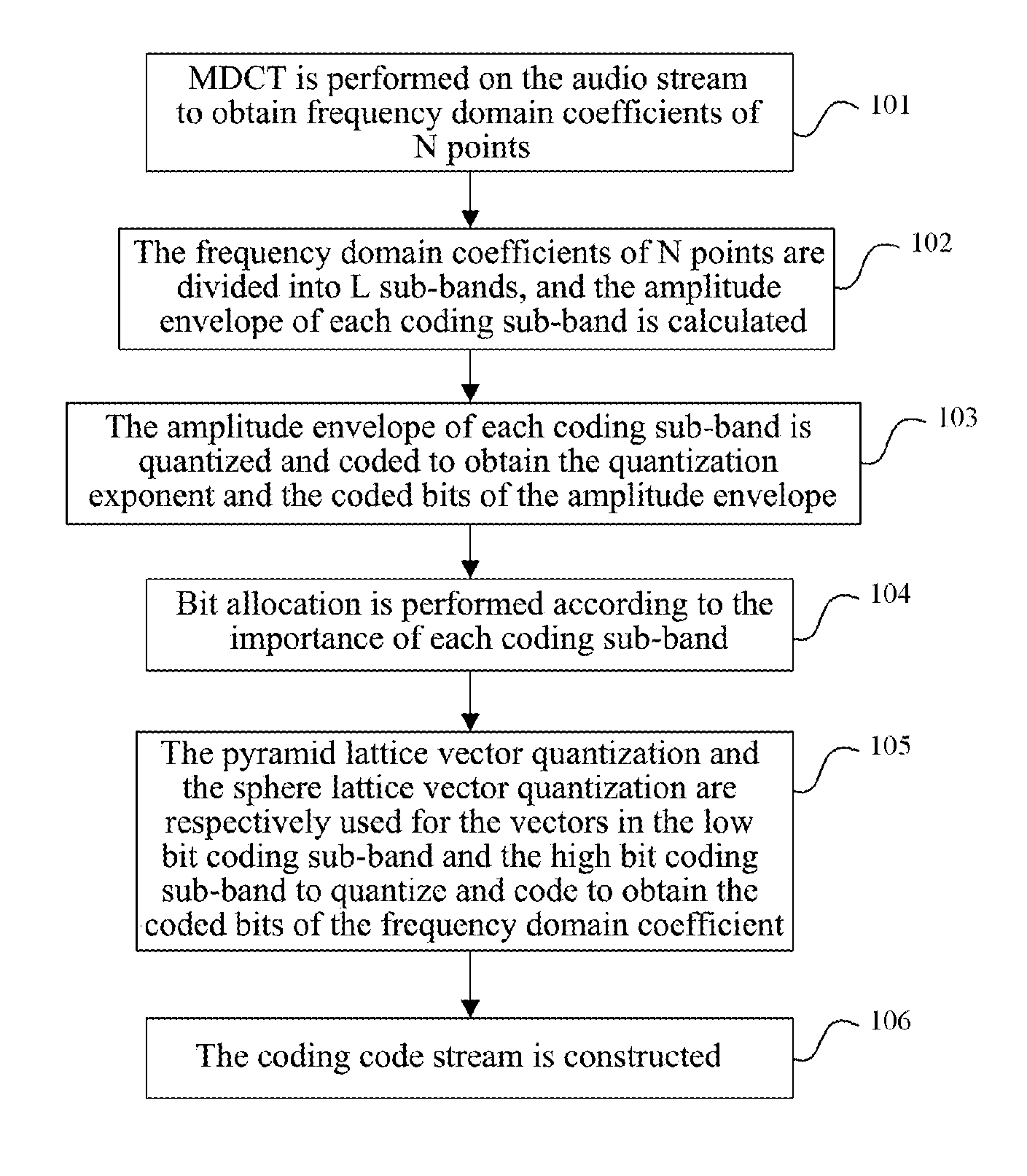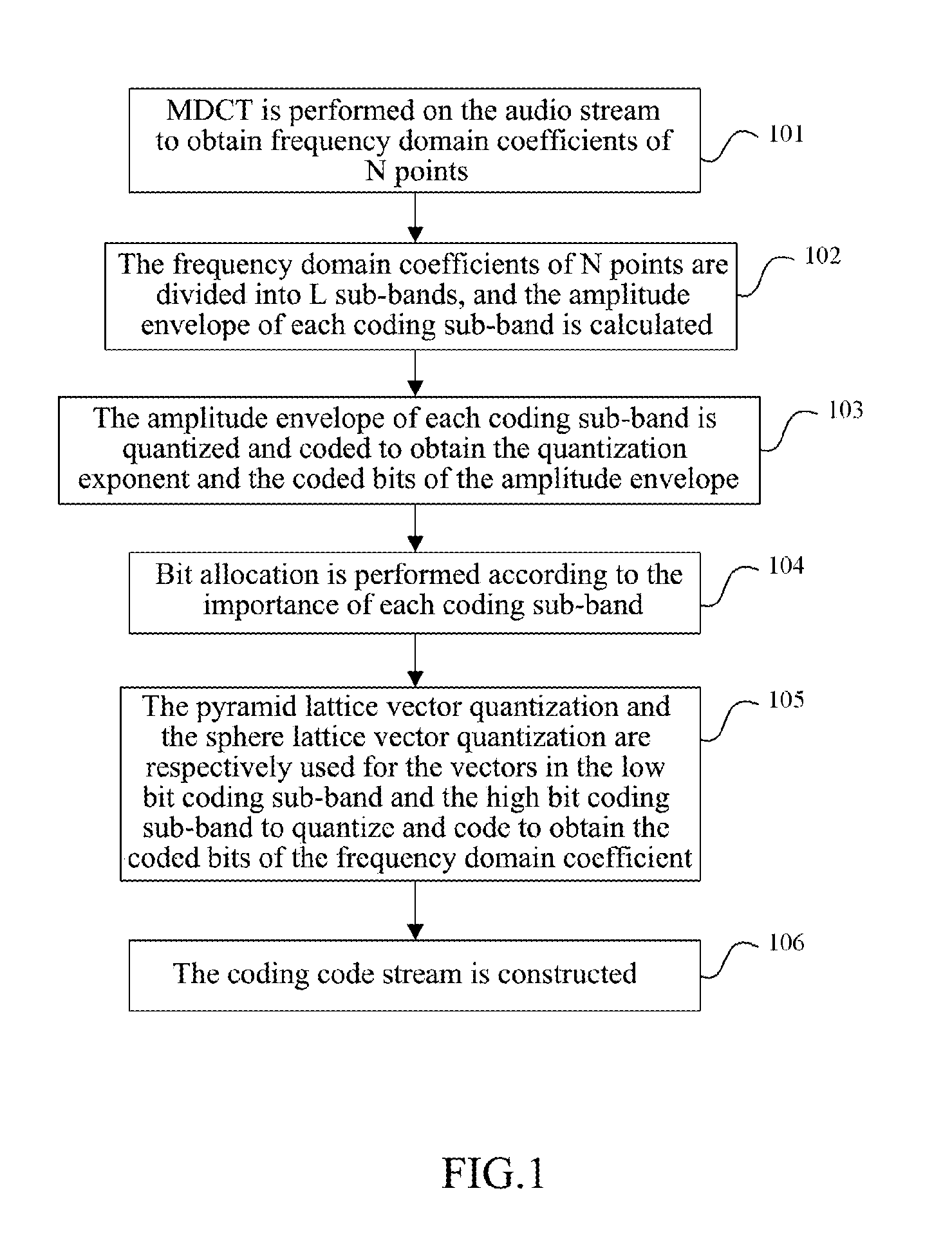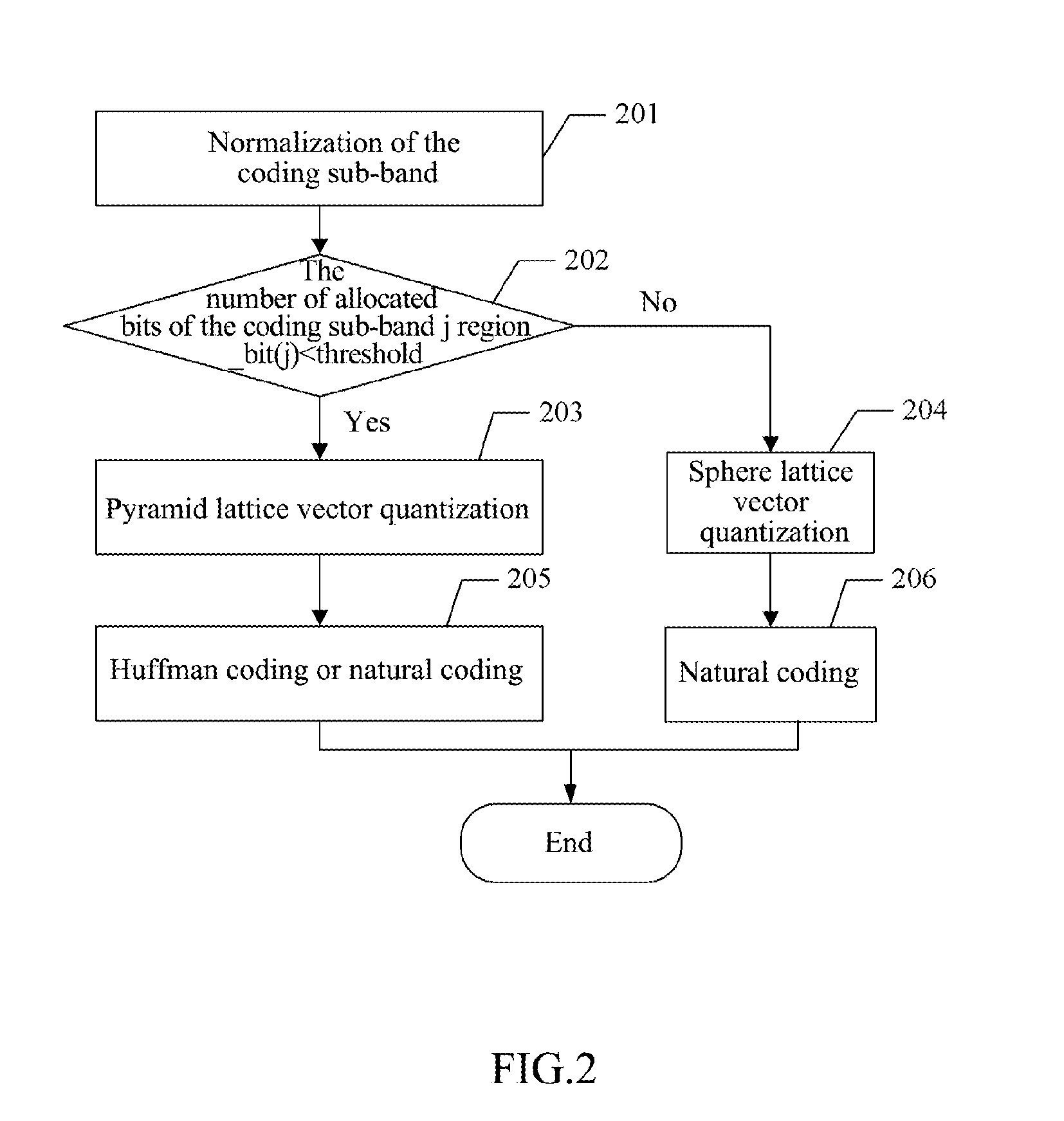Audio-Encoding/Decoding Method and System of Lattice-Type Vector Quantizing
a vector quantization and audio coding technology, applied in the field of audio coding and decoding technology, can solve the problems of code book truncation, code book truncation, and the code book obtained by training the training sequence with a clustering algorithm is usually not the global optimal, so as to improve the efficiency of bits, improve the voice information source coding effect, and low complexity
- Summary
- Abstract
- Description
- Claims
- Application Information
AI Technical Summary
Benefits of technology
Problems solved by technology
Method used
Image
Examples
example 1
Coding Method
[0161]FIG. 1 is a structure schematic diagram of the audio coding method of lattice vector quantization in accordance with the example of the invention. The audio stream with a frame length being 20 ms and a sampling rate being 32 KHz is taken for instance to illustrate the audio coding method of the invention in the example. The method of the invention is also suitable under the conditions of other frame lengths and sampling rates. As shown in FIG. 1, the method comprises the following steps:
[0162]Step 101, Modified Discrete Cosine Transform (MDCT) is performed on the to-be-coded audio stream to obtain frequency domain coefficients on N sampling points in the frequency domain.
[0163]The specific implementing in the step may be:
[0164]constituting a 2N-point time domain sampling signal x(n) by an N-point time domain sampling signal x(n) of the current frame and an N-point time domain sampling signal xold(n) of the last frame, wherein, the 2N-point time domain sampling sig...
PUM
 Login to View More
Login to View More Abstract
Description
Claims
Application Information
 Login to View More
Login to View More - R&D
- Intellectual Property
- Life Sciences
- Materials
- Tech Scout
- Unparalleled Data Quality
- Higher Quality Content
- 60% Fewer Hallucinations
Browse by: Latest US Patents, China's latest patents, Technical Efficacy Thesaurus, Application Domain, Technology Topic, Popular Technical Reports.
© 2025 PatSnap. All rights reserved.Legal|Privacy policy|Modern Slavery Act Transparency Statement|Sitemap|About US| Contact US: help@patsnap.com



